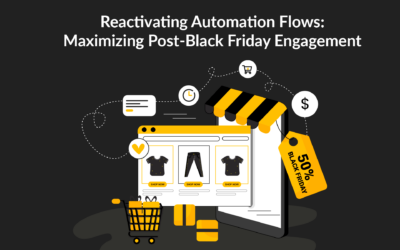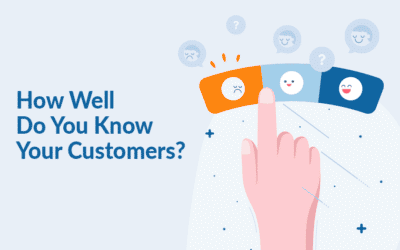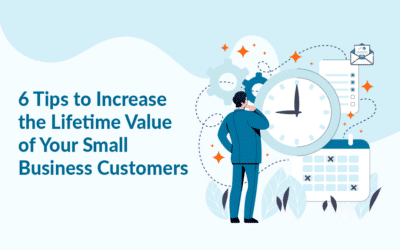The wheel already exists, so why reinvent it? Your customer base exists, so why recreate it? Lapsed customers are a fact of commercial life but lapsed does not necessarily mean lost – very far from it.
Of course, growing and nurturing a healthy business will necessarily include new customer acquisition as a vital part of your strategy, but it is also worth acknowledging that driving this new business through the acquisition funnel is actually the costliest way in which to increase your margins.
How come? Well, research aggregated by Small Business Trends makes for some interesting reading:
- The probability of selling to an existing customer is between 60-70%, whilst to a new prospect it is only between 5-20%
- 80% of future profits are likely to come from 20% of your existing customers
- 65% of a company’s business comes from existing customers
- Repeat customers spend at least 33% more than new ones
- 27% of small business owners in the US estimate that anything between 11-20% of first-time customers do not return.
Put simply, if your messaging, your customer experience, and your products and services are well balanced, it is just so much easier to sell to your existing customers than it is to new ones.
Supporting this basic truth, research consistently demonstrates that if you get your first-time customer to buy from you a second time, they become even more likely (32% more) to make a third purchase, with that third purchase making it even more likely (53%) that there will be a fourth, and so on, and so on – in a virtuous cycle.
All this said however, customers will inevitably drop by the wayside. This is a natural part of doing business, and there will be many and varied reasons for this happening, some easier than others to address.
What does a “lapsed customer” look like?
According to eMarketer, a typical ecommerce venture will have a contact list of which as many as 25-50% could be classified as “inactive” in terms of purchases. Your CRM software will allow you to work out where your business sits in this particular matrix.
However, there is no standard yardstick as to the definition of a “lapsed customer”. You will be the one to decide how long between purchases is the duration indicative of “inactivity” for your specific type of business.
Of course, a customer that used to make very regular purchases of a specific kind of product, for example four orders a month, that makes no purchases at all of that product for a couple of months may be doing so for a very specific reason – which may not be because they no longer like you as a brand.
Consider that the type of product they were purchasing may have a very particular use, be it a lifestyle product, or a more practical one. A change in their geographical, behavioural or psychographic needs might account for the change in purchase behaviour (see our Four Pillars of Segmentation overview below we explored previously in the Creative Segmentation article).
| Demographic | Geographic | Behavioural | Psychographic |
| Age Gender Income Education Social status Family Life stage Education |
Country City Location density Market size Language Climate Area Population |
Purchase History Engagement Intent Occassion Buyer stage User status Life cycle Sought Benefits |
Lifestyle Activity-Interest-Opinion (AIO) Concerns Personality type Values Attitudes Motives Preferences |
For example; a customer that had been purchasing a high level of baby products will not always have a need for the same kind of products. As the child grows, your conversation with them should do so too. If they no longer purchase standard nappies/diapers, could they now be after pull-ups? If they’re no longer buying babygros, is it now time to pitch toddler-oriented clothing to them?
Staying abreast of such demographic, geographic, behavioural and psychographic changes over time will help you tailor your reactivation campaigns to the specifics of the customer concerned. And if applied well enough ahead of time, might even mitigate the need for reactivation in the first place.
Don’t let your lapsed customers fall through the gaps of your CRM
Taking the time to ensure your contact list is up-to-date and consistently healthy is an extremely good habit to get into, and as we talk about in our article Win-Back strategies that really work, removing opt-outs and longer-term “inactives” should be a regular, default process for you.
Be wary though to ensure that those customers that have not formally opted-out, but which make up the group of formerly active buyers that have simply stopped engaging with your brand’s email communications are not removed from your contact list (and CRM system) without having been thoroughly “rinsed” first.
Instead of allowing these inactive records to adversely impact deliverability, prompting you to stop marketing to them, and in so doing eliminating all future potential purchases from them, you should first attempt to re-engage these lapsed customers.
They have opted-in to hear from you after all. Take the time to understand why they have gone quiet on you.
Does reactivation actually work?
By absolutely every possible metric, yes.
If you get this right, the dividends can be enormous, and as such, you should regard reactivation as an ongoing part of your overall marketing strategy, and not just a task to be carried out on an occasional one-off basis.
These are your existing customers, that have for whatever reason, simply lapsed. Put just a little effort into finding out why and you will see a genuinely positive impact on your bottom line.
Getting practical about reactivation
Research from an endless stream of sources, such as eMarketer, reveals time and again that email is seen as the most effective digital marketing channel for both customer acquisition and customer retention.
To make the most out of your dormant customers, you need to take a multi-faceted approach when seeking to “chivvy them up” again.
Data Hygiene
Used well, data is your greatest asset, maintained poorly, your worst enemy.
According to Forbes Magazine, data decays at an alarming rate, so quickly in fact that it is likely that between 25-30% of your contact data will go bad this year alone.
Your contact list is not static. Very far from it. Going back to the Four Pillars of Segmentation, virtually ALL this information is likely to change over time. If you do not stay abreast of these changes, you will have little no idea of the reality of the current wants and needs of the very real individuals on your contact list.
MarketingPlatform tools will help you form a clear picture about the reality of the lapsed customer records you have in your contact list. As a first step it will help you understand the bounce rate and deliverability of your mail campaigns, identifying bad or out-of-date email addresses and spam traps. Remove these as a first step and your contact list by definition becomes healthier.
My list is clean(er) now, but what’s next?
Rinsing this bad data out of your contact list now allows you to begin identifying who it is you want to reactivate, why, and how.
Who knew that segmentation could be this much fun?
This is actually when the reactivation process can start to be genuinely fun. Here you are able to play around to your heart’s content with the segmented parameters you feel are most appropriate for your business, such as:
- Campaign non-opens
- Contacts that opened did not click with a specific timeframe
- Contacts that have clicked but not purchased with a specific timeframe
- Contacts that purchased, but do so now less frequently
- Changes in purchasing habits
- Changes in the lifestyle of the contact extrapolated from previous purchases and browsing habits.
- What works for you, and who you should be addressing will be defined more clearly by the nature of your business and the type of customer with whom you are communicating.
However, do not be afraid to experiment here. These lapsed customers are actually an ideal “proving ground” upon which you can try out all sorts of new and different campaign ideas and find out what frequency works best to reactivate them.
Be bold.
Relevancy is both King and Queen, in fact, it’s the entire Royal Family
The campaign you are sending to the segments you defined above totally reflects their wants and needs, right? You’ve not just gone all “scatter-gun” on them, have you?
As we explore elsewhere in our article 5 email strategies that will get you seen and heard, the “What Strategy” of your email subject line is critical in getting your campaign opened.
Be brazen, ask them why they might have lapsed:
- What’s new with you?
- Big Changes?
Or play with an appeal to their more visceral, empathetic nature:
- Come Back!
- You’re Missed
Of course, you need to tailor this approach appropriately using the data you have at your disposal. However, it is worth bearing in mind that this simple methodology has been shown in research by ReturnPath to result in opening rates of around 13%.
But this is only the beginning.
The content of your campaigns must reflect that you are listening, engaged, and aware – not least of the fact that they are less engaged than before.
Make sure the content matches the subject line and reflects as precisely as possible what it is you know about their wants and needs.
- If they previously bought a particular type of coffee from you regularly but have since lapsed, make them an offer around that brand/type of coffee.
- Remind them why they subscribed and/or purchased from you in the first place. This is what you used to like from us, have things changed?
- Ask them how you can make your content more relevant to their changed circumstances. Did you move? Would you like to update your contact details? Would you like to change the frequency with which we communicate? Have you checked out our content on Facebook/Instagram/Twitter etc.?
Above all, understand as far as you can who they are and what it is they want, and only THEN reach out to them, and do so relevantly.
Test, test, and test again (again)
As always, the one thing you can almost guarantee is, that unless you are extremely lucky, you will not get it completely right first time. But every campaign, every attempt you make, will allow you to fine tune your segmenting, your messaging and your content.
Never be afraid of experimenting. You’re building on previous engagement, so the efforts you make to reactivate lapsed customers will pay off.
Try MarketingPlatform for free for 14 days
The trial period is free, completely non-binding and expires after 14 days if you do not wish to continue.
When you sign up, you will also receive our educational flow via a series of emails along with our newsletter with regular updates.




